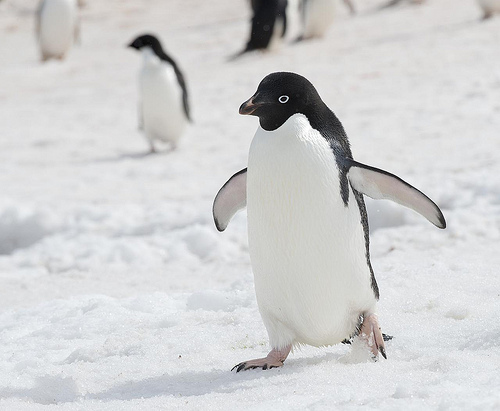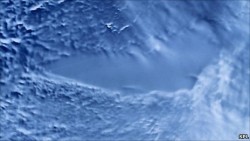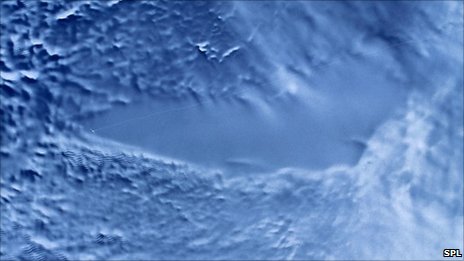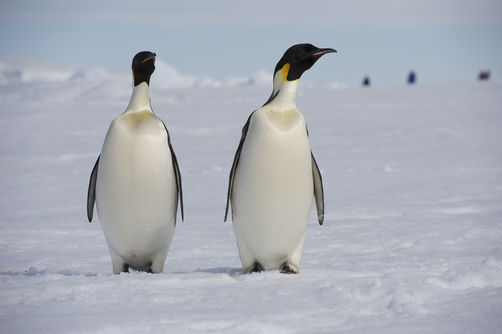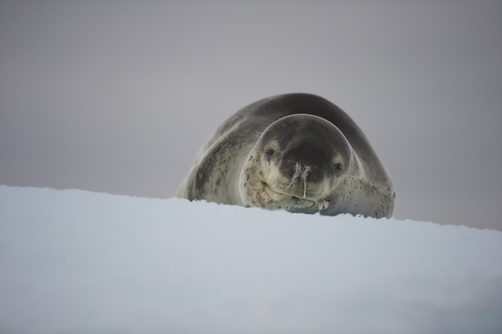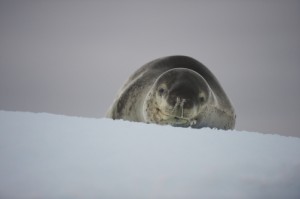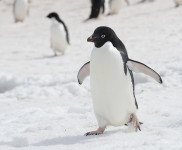
They may not be the emperor, but Adélie penguins sure are fascinating.
- Adélie penguins are a common species of medium-sized penguin native to Antarctica and nearby islands in the Southern Ocean.
- The scientific name of an Adélie penguin is Pygoscelis adeliae and it is from the family Spheniscidae, the family of penguins.
- The height of Adélie penguins is usually between 40 to 75 centimetres (16 to 30 inches), and they generally weigh between 3 to 6 kilograms (6.6 to 13.2 pounds)
- The feathers on the back half of Adélie penguins is black, as is all of the head, while the front half is coloured white except for the head, and there is a white line encircling the eyes.
- The diet of Adélie penguins consists primarily of krill, squid, and fish such as silverfish, and they are preyed on by orcas and leopard seals, as well as birds known as ‘skuas’, and they have an average lifespan of ten to twenty years.
Adélie Penguin
Image courtesy of Christopher Michel/Flickr
- Adélie penguins are found on ice shelves in the winter where they hunt for their food; and they live in large colonies and breed in the spring and summer months on land where there is no ice.
- Female Adélie penguins typically lay two eggs in a rock nest, that are incubated by both the female and her life long male partner, and while one sits on the eggs or looks after the young, the other is absent searching for food for up to ten to twelve days at a time.
- Adélie penguins can travel distances of roughly 13,000 kilometres (8078 miles) or greater each year, to and from the breeding grounds in the south, to hunting grounds further north.
- Adélie penguins can swim at speeds of 72 kilometres per hour (45 miles per hour), and they can reach depths of up to 175 metres (574 feet) in water.
- Food eaten by Adélie penguins is not chewed, but swallowed, due to the teeth-like protrusions found inside their mouth that are designed to grip onto the food, and the penguins are able to eat up to 2 kilograms (4.4 pounds) of food in a single day.
Bibliography:
Adélie Penguin, 2015, National Geographic, http://animals.nationalgeographic.com.au/animals/birds/adelie-penguin/
Adélie Penguin, 2015, Wikipedia, https://en.wikipedia.org/wiki/Ad%C3%A9lie_penguin
Adelie Penguin, 2015, A-Z Animals, http://a-z-animals.com/animals/adelie-penguin/





